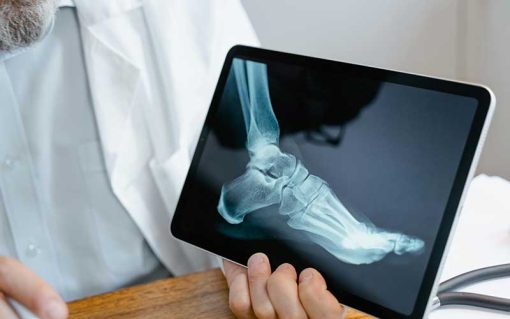Does Your Ankle Hurt While Sitting? Here Are Some Causes

Ankle pain while sitting can be caused by a variety of issues, even though the ankle isn’t bearing weight. Here are some common causes:
1. Nerve-related causes
Tarsal tunnel syndrome: Compression of the tibial nerve as it passes through the tarsal tunnel on the inside of the ankle. Pain may radiate into the foot and worsen while sitting.
Sciatica or lumbar radiculopathy: Nerve irritation in the lower back can cause referred pain to the ankle, even without local ankle issues.
Peripheral neuropathy: Common in people with diabetes or B12 deficiency, causing burning, tingling, or pain in the feet and ankles.
2. Circulation problems
Poor circulation (Peripheral artery disease): Can lead to discomfort, cramping, or aching, especially when sitting for long periods.
Deep vein thrombosis (DVT): A blood clot in a deep vein (often the calf) may cause pain, swelling, or tightness in the ankle or leg, even when not moving.
3. Joint or soft tissue issues
Arthritis: Osteoarthritis or rheumatoid arthritis can cause ankle pain that is felt even at rest.
Previous injury: Old sprains, fractures, or tendon injuries can lead to chronic pain or sensitivity when the ankle is in certain positions.
4. Positional factors
Prolonged sitting posture: Sitting with pressure on the ankle or poor leg support can compress structures or strain tendons/ligaments.
Crossing legs: Can reduce blood flow or compress nerves leading to ankle discomfort.
5. Inflammatory conditions
Tendinitis: Inflammation of tendons like the Achilles or peroneal tendons can ache when the foot is at rest.
Gout: Sudden pain and swelling in the ankle due to uric acid crystal deposition—can be triggered while inactive.
When to see a doctor:
*Persistent or worsening pain
*Swelling, redness, or warmth
*Numbness or tingling
*History of injury or chronic conditions (e.g., diabetes, arthritis)
